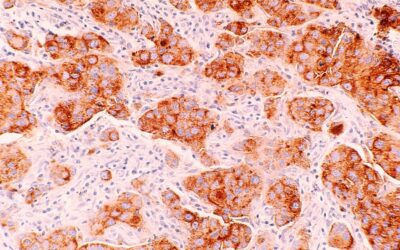Some of us remember the term “large data,” which was a big deal in the 1980s. Desktop computing was just beginning, and statistical models were the leading tool in data analysis. These models leveraged matrix algebra techniques, and methods such as matrix inversion...
Geoffrey Jacquez, Ph.D. Posts
Perils of Pareidolia and AI: Can AI find disease clusters?
by Geoffrey Jacquez, Ph.D. | Nov 27, 2023 | Geospatial Data & Analysis, Learn with BioMedware
A major problem in the geospatial analysis of health events is identifying “true” excesses in health outcomes and disease risk. Most cancers, for example, occur at a “background” rate, often due to the underlying DNA mutation rate. This background mutation rate is...
Vesta 2.0: The Latest Advancement in Geospatial Analysis
by Geoffrey Jacquez, Ph.D. | Nov 8, 2023 | BioMedware News, Geospatial Data & Analysis
BioMedware is delighted to announce the release of Vesta 2.0, a state-of-the-art geospatial analysis software funded with grants from the National Cancer Institute and the National Institute for Environmental Health Sciences. Vesta is an acronym for “Visualization and...
Dr. Pierre Goovaerts publishes cutting-edge research on space-time modeling of trichloroethylene in northern Michigan
by Geoffrey Jacquez, Ph.D. | Oct 25, 2023 | BioMedware News
BioMedware is delighted to share the article recently published by our Chief Scientist and colleagues titled "Space–Time Distribution of Trichloroethylene Groundwater Concentrations: Geostatistical Modeling and Visualization". Appearing in the journal Mathematical...
BioMedware receives new grant for modeling human exposures and their uncertainty
by Geoffrey Jacquez, Ph.D. | Oct 10, 2023 | BioMedware News
In September 2023, BioMedware’s Chief Scientist, Dr. Pierre Goovaerts, received the grant “Geostatistical Software for Non-Parametric Geostatistical Modeling of Uncertainty”. Funded by the National Library of Medicine of the National Institutes of Health, this new...
Missing Data Part II: The Saga Continues
by Geoffrey Jacquez, Ph.D. | Sep 6, 2023 | Geospatial Data & Analysis
Our team recently published a blog on missing data and how it can be handled in GIS applications such as Vesta. This topic resonated with several of our readers, who raised important points we would like to discuss further. The first blog observed that missing data...
BioMedware’s Experience with Digital Summer Clinic Interns: Path to Success
by Geoffrey Jacquez, Ph.D. | Aug 1, 2023 | BioMedware News
Together with Ann Arbor SPARK, the Eastern Michigan University Center for Digital Engagement offers a paid Digital Summer Clinic internship. This program helps students and recent graduates find careers in the digital space. These internships are available to all...
7 Features to Consider Before Purchasing a GIS Solution
by Geoffrey Jacquez, Ph.D. | Jul 3, 2023 | GIS Technology
Not all GIS software is created equal. When deciding on which GIS software to purchase, there are several things you should look for. #1 Purpose What will you be using the software for? Think about the application area first, such as spatial health analysis, climate...
The National Cancer Plan of 2023
by Geoffrey Jacquez, Ph.D. | Jun 20, 2023 | Public Health
Recently the National Cancer Institute released its National Cancer Plan which provides a comprehensive framework to develop cancer control strategies, share knowledge, and accelerate progress. The overall objective is to end cancer as we know it; a target that has...
How Geospatial Analysis Has Evolved Over Time
by Geoffrey Jacquez, Ph.D. | Apr 4, 2023 | GIS Technology
Geospatial analysis is the process of collecting, storing, analyzing, and visualizing geographic data. It has been around for centuries, but how it’s done has changed dramatically over time. The beginning of GIS The earliest known use of geospatial analysis was by the...










